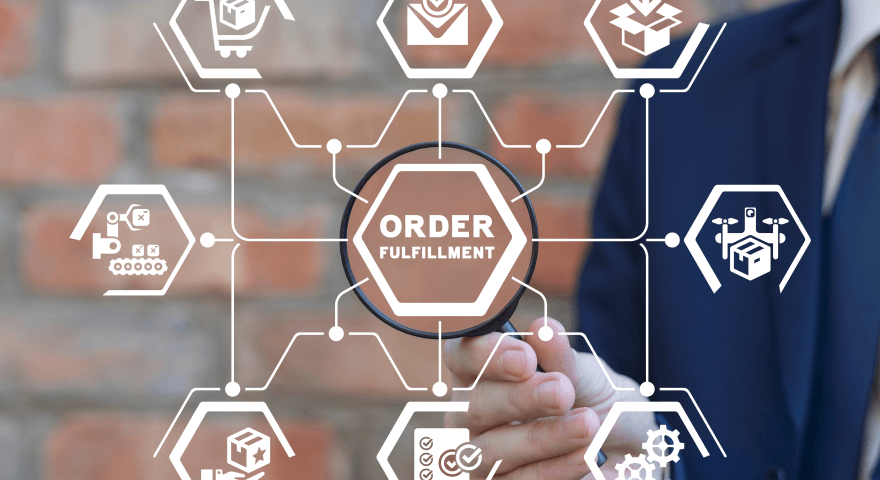The ultimate goal of any business is to deliver its product and service to the customer on time and in the right quantity. Supply chain management plays a significant role in achieving this goal. The supply chain of any business is a complex and dynamic network of integrated processes, people, and technology to fulfill customer demand. There are different players within the supply chain of any products: suppliers, wholesalers, manufacturers, 3PL service providers, etc. Successful supply chain management contains the efficient management of each part in which the right strategic, tactical, and operational decisions are taken and implemented at the right time.
Today's business world is turbulent, and changes happen fast. Therefore, you cannot neglect the importance of making the right decision within different parts of the supply chain. The experience of the Covid 19 pandemic is good proof of how being behind in implementing correct decisions would affect fulfilling customer demand. Of course, making the right decision requires accessing the right and accurate data on time, which is now more attainable due to advancements in technology and implementing digital devices in a different part of the supply chain. In other words, we live in the era of big data, in which more data is produced than before. But still, lots of companies are behind in implementing big data and advanced analytics in their supply chain. Therefore, they can not get the full benefit of having this amount of data. The main focus of this blog is the potential of big data and advanced analytics in the supply chain management decision-making process. In particular, it tries to show how big data promotes the self-driving supply chain, i.e., a data-driven supply chain in which humans mainly have a controlling role. Besides, this article shows the potential and benefit of the data-driven system within different parts of the supply chain. Finally, this article tries to address the potential risks of such systems.
The autonomous decision-making process: what is it?
Autonomous decision-making focuses on interpreting data to make calculated moves with little or no human intervention. The driving forces behind autonomous decision-making are Artificial Intelligence and Machine Learning, which harness data to make effective, quick, and rational decisions rather than relying on empirical or anecdotal evidence and observations.
Drivers of the self-driving supply chain
Advancements in digital technology, such as RFID tags, GPS, 3D Printing, advanced weather forecasting tools, among others, are triggering an unprecedented, positive change in various industries. The tools are not just plugging the leakages as ad hoc measures. Still, they are also generating useful data which empower businesses with more accurate information and enable them to make more intelligent decisions in the future. Simultaneously, generating this amount of data forces businesses to rethink the traditional way of managing the supply chain at different levels, from operational to strategic. For example, the human mind cannot process and analyze this amount of data to make decisions. Therefore, managers should apply technologies such as artificial intelligence and experience new methods to overcome their shortcomings and benefits data as a new strategic resource.
Advantage of data-driven decision making
A data-driven supply chain based on implementing artificial intelligence in the supply chain has many advantages; for example, it increases transparency and visibility and eliminates or reduces human bias. Additionally, it promotes sustainability. By harnessing the power of technology, enterprises can optimize resource efficiency and create an effective long-term supply chain.
In today's business world, implementing new technologies and digital solutions helps companies save at least 6 percent in annual supply chain costs and augment their revenues by at least 7 percent annually.
Data can also help companies achieve better coordination and understand demand patterns through collaboration with suppliers, logistic service providers, and customers. This leads to end-to-end integration and enables firms to plan and execute in real-time.
In general, institutions operating in a dynamic and complex domain like logistics can benefit from the alacrity of a data-driven approach to cut down on lag in the supply chain. A cognitive supply chain — or a digitally-led process-centric supply chain — is an emerging paradigm that seeks to improve the traditional supply chain. This intelligent supply chain focuses on outcomes and proactively responds to real-time demand signals. However, data-driven decision-making can not replace human intelligence. Ignoring human judgments completely and relying only on data might lead to the wrong conclusion. Therefore, the ideal situation is implementing a data-driven supply chain in which the human brain works as a complementary element and control and approves data's suggestions. Such a decision-making system can grantee using the full potential of data while avoiding the shortcomings due to machine weaknesses.
Potential for data-driven decisions in the supply chain
Getting the full benefit of available data and an automated decision-making process is the ultimate goal of self-driving supply chains. You can obtain these goals by increasing visibility and decreasing human intrusion. In particular, increasing visibility and transparency positively affect different parts of the supply chain, like for instance:
Sales, Inventory, and Operations Planning
Implementing a data-driven supply chain improves forecast accuracy and promotes optimization. Additionally, it facilitates inventory projection and scenario planning. Besides, it helps in supplier risk management incoming goods projection via proper use of available data.
Sourcing
In sourcing, implementing a data-driven supply chain facilitates automatic analysis of contract compliance. It helps in aggregate demand and supply balancing. With the help of a self-driven supply chain, quantifying the benefits from spend tooling is easier. Above all, identifying cost drivers and modeling the cost modeling can be done more effectively via data-driven systems.
Production
For the manufacturing sector, AI ensures not only optimization of energy-intensive production but also effective inventory management. Data-driven systems facilitate statistical quality control and tolerance optimization.
Warehousing
A data-driven supply chain facilitates warehouse space allocation, automatic stock relocation in high bay storage areas, and workload optimization in warehousing. Moreover, it increases efficiency by allocating picking zones.
Transportation
The self-driving supply chain facilitates dynamic routing and clean sheet cost modeling in logistics and transportation. Besides, it promotes real-time routing and ramp allocation at warehouses. A data-driven supply chain makes better delivery scheduling more in line with consumer patterns.
Point-of-sale
For stores, inventory check to avoid potential unavailability of stock and keeping customers posted on availability was a major challenge. However, the data-based approach has been instrumental in reducing this point-of-sale challenge significantly by helping store managers keep a tab on out-of-stock detection, shelf-space optimization, and scheduling of retail employees. Adopting technology has improved sales in recent years and opened opportunities galore both for companies and potential job seekers.
Consumer
While the business-to-business segment has benefited from the cognitive self-driving supply chain, it has also given an invaluable insight into the consumer psyche. Now, businesses can tailor product recommendations based on past purchases. Moreover, implementing such a system makes fraud detection easier and facilitates the return process.
Challenges in deploying data-driven decision-making supply chain using big data has its benefits, but it also stokes concerns over privacy, ethic, and information security. Business initiatives dependent on collecting information from click-stream and GPS devices can create barriers against future business engagements.
With attack vectors on the lookout for opportunities to steal sensitive credentials, any breach may compromise the entire supply chain and disrupt many lives. Besides investing heavily in big-data analytics tools, firms must also budget for their upkeep and security.
Culturally, data-driven corporate culture can also cause employees to doubt their judgment and experience, as managers may increasingly look at data to interpret information. But no system can guarantee 100 percent success. Despite all their benefits, data-driven tools, too, are liable to err. They may mislead by misunderstanding figures or reflect incomplete stories to cause inaccurate decision-making.
With increasing attention towards data-driven systems, human beings' potential or possible role in such a system raises awareness. There is a concern that moving toward a self-driving supply chain will eliminate the need for humans in the decision-making process. As automation did not eliminate the need for human beings in the production line, it is predicted that the autonomous decision-making process won't replace them. It seems that in this new system, human beings find another role that is more controlling and approving the decision made by the system.
In summary, implementing a data-driven decision-making system, a hybrid system containing technology capabilities and human analysis ability, is the most probable scenario in the future. As this blog discussed, such a system has many advantages compared to the current system if it is adequately implemented and all the risks associated with that are addressed and controlled correctly.





.jpg)



.png)
